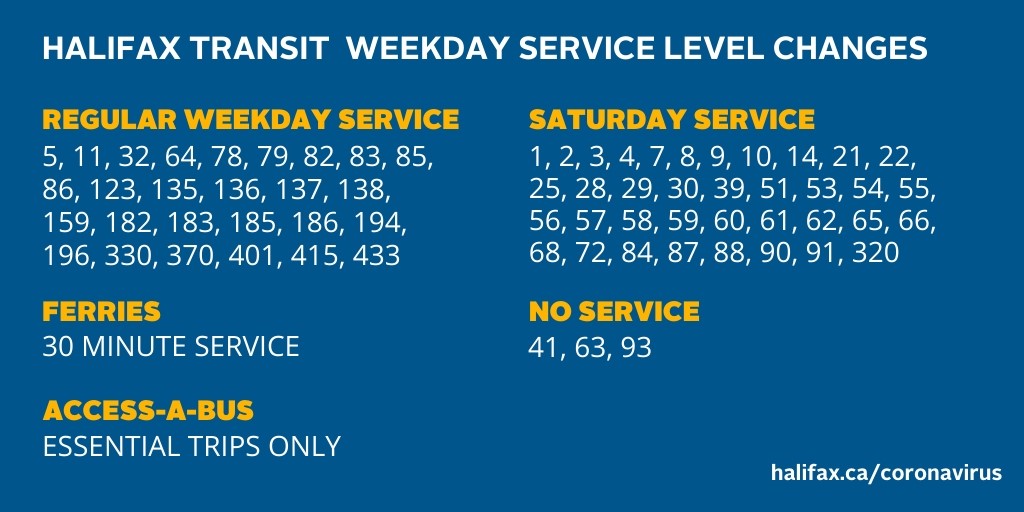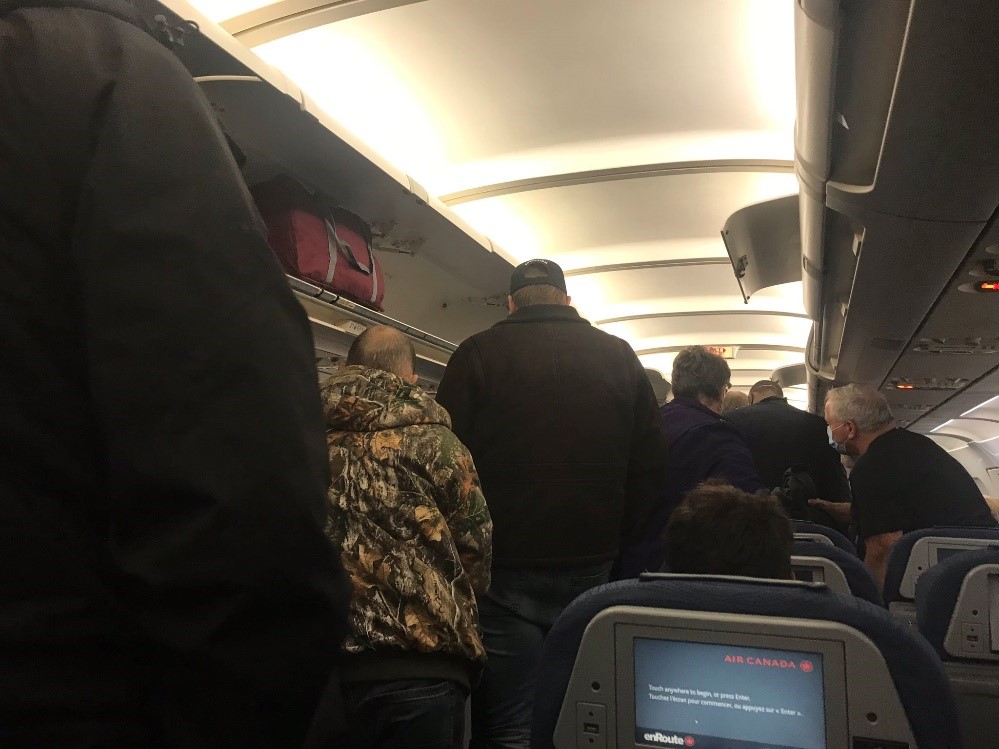Atlantic Canada continues to fare better than the rest of Canada under the COVID-19 emergency, with Nova Scotia and Newfoundland and Labrador showing a significantly improving public health picture over the past month. New Brunswick, unfortunately, suffered a setback in the Campbellton area late in May, and at month end was reporting a total of 12 active cases, out of a total of 30 in the four provinces. The Atlantic premiers remain focused on keeping the infection away from the region, and rigid travel restrictions remain in effect. The tourism outlook for 2020 is bleak indeed.
The only interprovincial travel now available in the region (other than private auto and a single daily Q-400 return flight between Halifax and St.John’s) is the tri-weekly service still being maintained by a struggling Maritime Bus on all its major routes. While the company is clearly hurting, owner Mike Cassidy remains optimistic about its post-pandemic future:
Perhaps taking a cue from the tight provincial border controls, VIA Rail announced on May 6 that its Ocean service would remain suspended until at least November 1. Beyond some vague references to using the hiatus as an opportunity to upgrade the aging HEP-1 stainless steel long distance equipment, VIA offered no real explanation as to why they were going so much farther than any other passenger carriers, and cancelling service nearly six months into the uncharted future.
https://media.viarail.ca/index.php/en/press-releases/2020/rail-extends-suspension-canadien-and-ocean
When it does return, the train will apparently be very different than before. In a written statement responding to an enquiry from the Moncton Times &Transcript on May 26, the Crown corporation said it was “pleased to announce an operational plan that will allow to continue operating the Ocean without access to the Halterm rail loop.” Pressed for further details, VIA declined to answer any of the newspaper’s questions. Neither has the company had any apparent engagement on the issue with provincial governments or the municipalities it serves. It is evident, however, that the product will be further downgraded from the already inadequate service offered at the time of the abrupt shutdown on March 13.
Meanwhile, public transit in the region’s larger urban centres continues to struggle, while remaining operational on a limited basis. Expenses have not fallen in proportion to the greatly reduced ridership, and of course many systems are suffering a further revenue shortfall because they are unable to collect fares from their few remaining riders. Transport Action Atlantic has urged the mayors of all cities and towns in the region that operate public transit to get behind the campaign for federal funding to ensure survival and recovery of these systems in the post-COVID era.
As the COVID restrictions gradually ease in Halifax, capacity on city buses was increased as of May 30 by once again allowing passengers to stand. A maximum of five standees are now permitted on conventional buses, at any given time. Standing passengers are asked to monitor physical distancing and should avoid positioning themselves immediately next to seated passengers or other standing passengers. Alternating seats will continue to be blocked off with appropriate signage. Mask usage is encouraged, and those who are feeling ill are warned not to use any transit service until their health returns to normal. Buses and ferries continue to operate on a reduced schedule, and fare collection remains suspended until further notice. The head of the transit workers union, meanwhile, warned that it could take up to two weeks to restore a full schedule.
In St. John’s, Metrobus Transit reports ridership was down close to 85 percent in the first quarter of 2020. The “Snowmageddon” blizzard in January was a contributing factor, but COVID-19 had the most drastic effect, according to a May 28 story in the Telegram, resulting in an increased subsidy requirement of nearly a quarter million dollars for the three-month period.
https://www.thetelegram.com/news/local/metrobus-ridership-down-85-per-cent-during-pandemic-454712/
Marine Atlantic’s constitutionally-mandated ferries between North Sydney and Port aux Basques have continued to maintain twice-daily departures throughout the pandemic emergency, with enhanced measures introduced to protect the health of passengers and crew. Initially maximum passenger limits of 250 per sailing were imposed to facilitate social distancing, but this has been subsequently reduced to 100 per departure. Meanwhile, the seasonal Argentia ferry, which is heavily dependent on tourism traffic, has been cancelled for the entire 2020 season. The other seasonal federally-funded “constitutional alternative” ferry service, between Nova Scotia and PEI is now operational – but only for large commercial trucks and their drivers. Bay Ferries Saint John-Digby vessel is continuing to offer one daily round trip, again with limits on maximum passengers permitted. And, the restart of the troubled “Cat” service between Yarmouth NS and Bar Harbor, Maine, has been postponed to mid-July at the earliest, and probably won’t run at all in 2020 if the US-Canada border remains closed.
Air access remains very limited, but so is demand. With continuing border restrictions imposed by all four Atlantic provinces, it appears that there is little difficulty maintaining social distancing even on infrequent flights by smaller aircraft. Some regional airports are showing only two or three flights a week on their departure boards, while Saint John is shut down completely. The normally-bustling Halifax Stanfield terminal was showing just seven flights a day at the end of May, with St. John’s likewise hosting just a handful of landings. Among the smaller terminals, Fredericton appears to have the most frequent service, with two daily Air Canada departures to Montreal and tri-weekly WestJet flights to Toronto. Air Canada is tentatively planning to ramp up its service at a number of locations effective June 22. Many of WestJet’s domestic routes are suspended through July 4, and Porter Airlines has extended its complete shutdown to July 28. It remains to be seen what demand will be like as we move into summer, and how long it might take for travel to again become an attractive proposition.
The deepening concerns about air transportation in the post-COVID era have prompted revival of the long-standing suggestion of a single, centrally located airport for New Brunswick. The concept appears be gaining some traction, drawing the surprising comment from one airport CEO that it just might have some merit. At least one respected columnist has endorsed the idea, with the caveat that high speed rail linking the cities of Moncton, Saint John and Fredericton must be part of the package. We’re not holding our breath on that one!
For updates on public transportation issues across the country, check out the latest newsletter from our national affiliate, Transport Action Canada:








